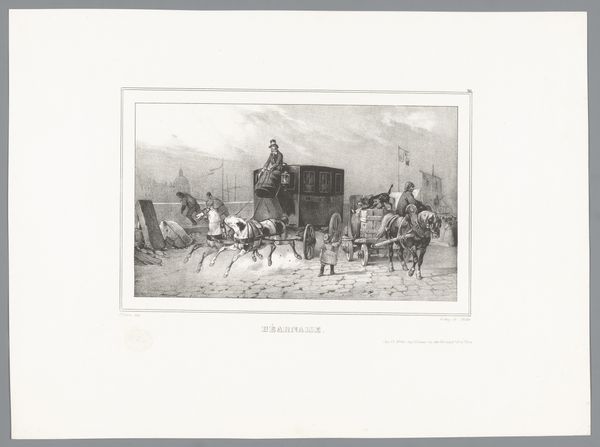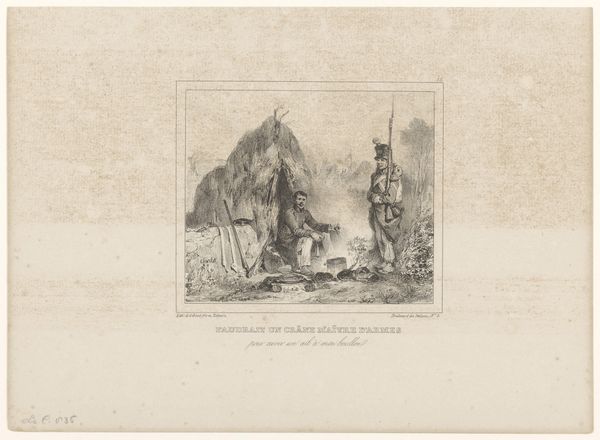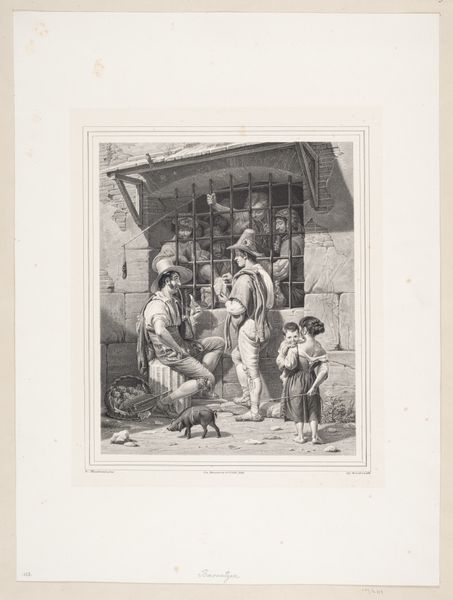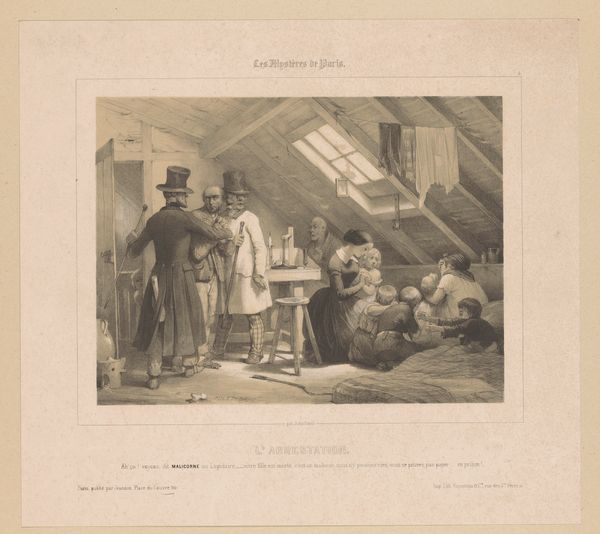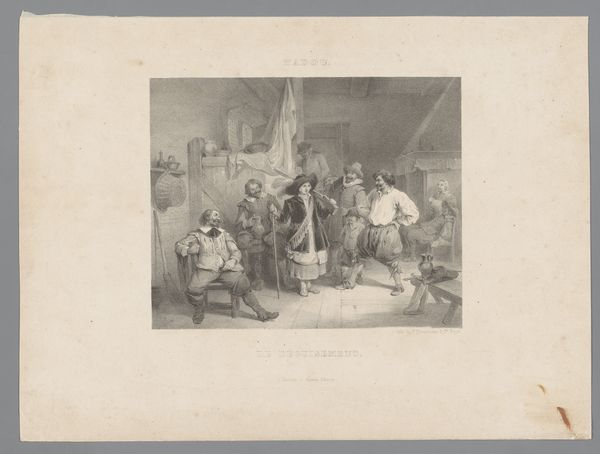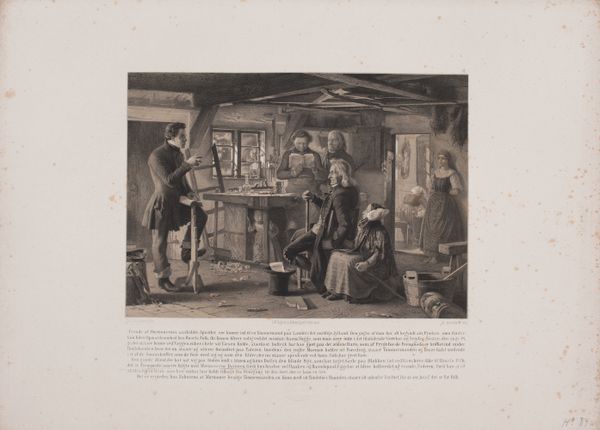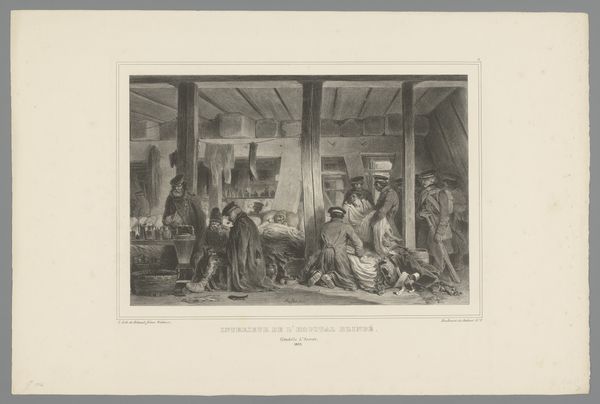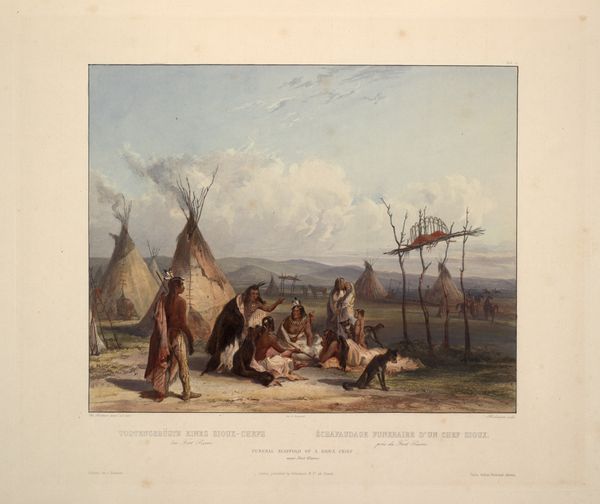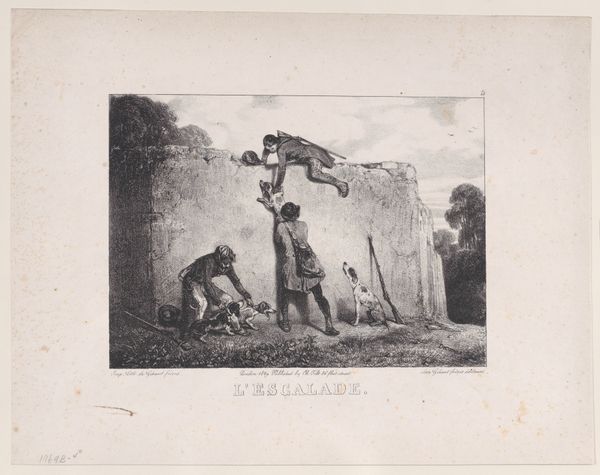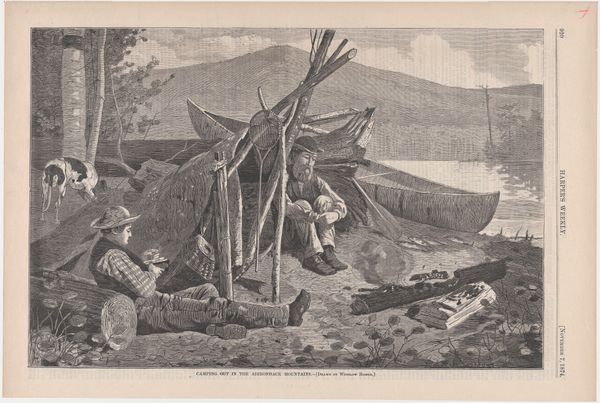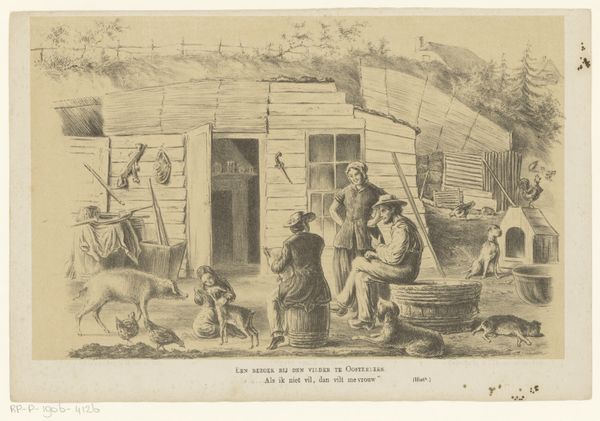
The Interior of a Hut of a Mandan Chief, plate 19 from Volume 2 of 'Travels in the Interior of North America' 1844
0:00
0:00
karlbodmer
Private Collection
# print
#
watercolour illustration
Copyright: Public domain
Curator: This print from 1844, “The Interior of a Hut of a Mandan Chief” by Karl Bodmer, gives us a glimpse into a world that was rapidly changing due to colonialism. It's rendered in watercolor, a technique which, in this context, feels both delicate and deliberately documentary. Editor: It’s interesting. I immediately notice the detail within the hut—the hanging objects, the central fire—but the muted color palette makes the scene feel somewhat… somber, almost as if viewing a staged display, not a living space. What do you see in this work? Curator: Precisely. The 'somber' tone is a direct result of Bodmer, a European artist, attempting to capture, and perhaps 'preserve,' a culture he witnessed undergoing immense pressure. This isn’t just a record of an interior; it’s a representation filtered through a colonial lens. How might his perspective affect the composition and his choice of what details to include? Editor: So you’re saying the artwork isn’t a neutral portrayal, but rather a deliberate…interpretation? Could you explain what this perspective brings to light in terms of the Mandan people and the period? Curator: Absolutely. The image, in its effort to document, inevitably exoticizes. Consider how the Mandan people are positioned, seemingly passively engaging with daily life within their dwelling. Are they active agents in their own story here, or are they objects being observed and cataloged? The arrangement may romanticize or oversimplify a complex cultural dynamic, unintentionally furthering misconceptions about Indigenous populations. Editor: It’s like the image becomes part of the historical narrative it’s trying to depict, potentially altering our understanding of the Mandan people through that initial Western perspective. Thank you; I'll never look at historical artworks quite the same way. Curator: And hopefully we’ve sparked further inquiry into these visual representations and the critical importance of questioning whose stories are being told and how.
Comments
No comments
Be the first to comment and join the conversation on the ultimate creative platform.

